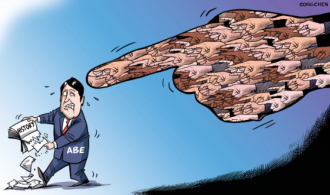School equality and quality
(China Daily) Updated: 2012-09-07 08:07
Despite this country's education reforms of the past two years, ensuring there are equality and quality in education remains a tough task.
According to estimates, as much as 2.2 trillion yuan ($158 billion) will be spent on education in China this year, an amount equal to 4 percent of the country's GDP.
That percentage was set as a goal for education spending in the early 1990s, according to Yuan Guiren, minister of education, who spoke to reporters on Thursday about his ministry's efforts in the past two years to put China's national guidelines on education reform into effect.
Many of the accomplishments have helped ensure that more people have received an education. They have, for instance, provided free lunches to 26 million students in impoverished rural areas, increased the subsidies that poor children in primary boarding schools receive from 500 to 1,000 yuan a year and increased those that go to poor students in middle boarding schools from 750 to 1,250 yuan.
Still, we cannot deny that huge discrepancies exist between the education conditions found in poor rural areas and those in cities. In August, various headmasters from impoverished counties were invited to Beijing. Some said they would need another 50 years to have schools that are as developed as those in the capital city.
Then there is the matter of quality in education. A question posed by the renowned scientist Qian Xuesen - Why haven't Chinese institutions of higher learning produced outstanding scientists and scholars? - points to a weakness in the Chinese way of teaching.
Yuan was right when he said that it is important to make sure that money designated for education is spent efficiently.
Such money also needs to be used to cultivate students' talents and improve the quality of technicians and skilled workers, who will have to be competent at their trades if the country's manufacturing industry is to improve.
The country's policy of offering subsidies to those who seek a mid-level occupational education needs to be extended to those who want a higher polytechnical education, which will provide educational opportunities to rural workers and those who will be employed in the upgraded manufacturing industry.
(China Daily 09/07/2012 page8)











